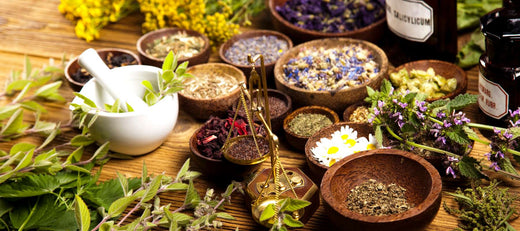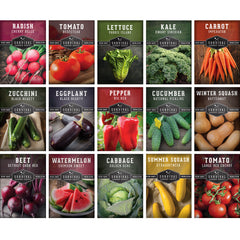Cucumbers are one of the most popular vegetables to grow at home. They’re highly rewarding, producing an abundant harvest of cool, crunchy vegetables that can be eaten fresh or turned into pickles for long-term storage. They’re straightforward and fairly easy to grow successfully, providing a great introduction to gardening for children and novices. Let’s get started!
Choosing the Right Cucumber Seeds
Pick quality cucumber seeds from heirloom varieties that have a good track record for reliability and performance. Consider your needs and your growing conditions when choosing your varieties. The All-American Selections Winning Straight Eight Cucumber is an excellent slicing cucumber, while National Pickling Cucumbers are a favorite for fermenting and canning. If your space is limited, Spacemaster Cucumbers are a great choice. If you want a variety of cucumbers with different flavor profiles and growing habits, our Cucumber Collection can give you some
great options to explore.
Starting Cucumber Seeds Indoors
Although you can start cucumber seeds indoors, fair warning: they have sensitive root systems and are susceptible to transplant shock. If you must start them early to get ahead of the growing season or for space reasons, take precautions to protect those delicate roots during the transplanting process. Start them 3-4 weeks before the last frost date, following the depth recommendations on your growing packet and keeping the soil evenly moist. Once the seedlings have at least two sets of true leaves, you can begin the process of hardening them off, gradually exposing them to outdoor conditions over the course of a week until they’re ready to be moved to their permanent location.
Direct Sowing Cucumber Seeds
Cucumber plants really thrive when they are sown directly, and this is our strong recommendation. After the soil has warmed to at least 70°F, plant seeds in fertile, well-drained soil. Organic amendments like compost can help enrich the soil. Choose a spot that receives at least 6-8 hours of direct sunlight daily. Vining cucumbers should be spaced 12-18 inches apart if you use a trellis, or 3-5 feet apart if not. Bush varieties can be spaced slightly closer together.
Caring for Cucumber Plants
Although they are easy to care for, there are a few things to keep in mind when growing cucumbers. These plants need plenty of moisture, good airflow, and protection from pests and diseases.
Watering
Keep cucumber plants well-watered with soil that is consistently moist, but not waterlogged. Water at the soil level rather than overhead to reduce the risk of disease. Consistent watering is especially important during flowering and fruiting, as it will help your plants yield more delicious, healthy cucumbers.
Mulch
There are many benefits to mulching your cucumber plants. By keeping the soil covered, you will help deter the establishment of weeds that can compete with your plants for nutrients or spread disease. Mulch helps keep the soil temperature and moisture levels steady. Organic mulch will also break down over time and add nutrients to the soil.
Trellising Cucumber Plants

Ideally, your cucumber vines should have vertical support to climb. This saves space in the garden, improves air circulation, reduces disease risk, and makes harvesting much easier. There are many cucumber trellises to choose from, but it’s important not to be swayed by a pretty picture on social media. Find something sturdy that will hold the weight of the plant and heavy fruit.
- Vertical stakes are simple and easy to install. They may require frequent adjustments and reinforcement as they can become unstable under heavy loads as plants grow.
- A-frames provide excellent support and are easy to move and store. They are a bit more complicated to build and set up, and are best for those who have the capacity for that initial time investment.
- Horizontal wire is an effective method for training vines to grow horizontally and maximize space. They do need secure anchoring to withstand plant weight and windy conditions.
- Cattle panels, hog panels and fencing are sturdy and durable options that support heavy vines and fruit well. They are an expensive investment in time and energy for installation, so make sure you’re ready for the commitment this option requires.
- String trellis is an economical option that is very easy to set up and provides good flexibility. It can be an ideal option for gardeners low on space or budget. String will often need to be adjusted, replaced, or reinforced, especially during the fruiting season.
- Garden ladders are an attractive, decorative option and are quite sturdy. However, ladders do take up a lot of space and are expensive, so most gardeners find them to be impractical.
Common Cucumber Pests and Diseases
Once your plants are established, it can be heartbreaking to lose them to pests or diseases before you even get to enjoy the fruits of your labor. Here are the most common issues with cucumber plants to watch out for, and strategies for dealing with each.
Cucumber Beetles

These small, yellow-green insects have black spots or stripes and can cause massive damage to cucumber plants. To prevent them from destroying your hard work, use row covers to protect young plants, particularly during the early part of the season. Check your plants regularly, and handpick beetles as you see them. This can keep the infestation small. Insecticidal soap or neem oil can be useful for managing larger infestations. Rotate your crops yearly to prevent the establishment of a permanent beetle population.
Aphids
There are many types of aphids, but the cucumber aphid (also called melon or cotton aphid) is the most common type to infest cucumber plants. These tiny insects are about 1/16 to 1/8 inch long and vary in color from yellow to green to black. They can be easily dislodged with water or by crushing them between your fingers as you find them. Attracting beneficial insect predators like ladybugs, lacewings, tiny parasitic wasps, and hoverflies to the garden can help keep aphid populations down, too.
Powdery Mildew and Downy Mildew
These fungal infections can cause harm to your cucumber plants, too. Powdery mildew looks like a white powder has covered your plants’ leaves, while downy mildew presents as yellow spots on leaves. Avoid overhead watering and ensure good air circulation as prevention. Remove affected leaves and any infected plant material as soon as possible to prevent spore circulation. A mix of 1 part milk to 2-3 parts water sprayed on both sides of the leaves is a surprisingly effective treatment for mildew on zucchini, melons, and cucumbers. Neem oil or sulfur-containing organic fungicides can also be used if necessary.
Harvesting Cucumbers
Cucumbers are ready to harvest when they reach the desired size for the chosen variety, usually around 6-8 inches for slicing varieties and 2-6 inches for pickling. Cucumbers don’t continue to ripen after harvesting like other fruits, so be patient and wait until they’re ready! Pick early in the morning when the vines are still cool, using garden shears or pruners instead of twisting, which could damage the vine. Harvest every day or two during the peak of the season to encourage more fruiting.
Growing cucumbers from seed is a fulfilling experience for any gardener. With proper care, you’ll enjoy a bountiful harvest of fresh cucumbers to enjoy. Eat your freshly harvested cucumbers immediately, make some yummy cucumber chips, and process some into pickles for long-term storage. I love lacto-fermenting garlicky half-sour pickles, while my husband likes bread-and-butter pickles. Plant plenty of different varieties so you can experiment with new recipes and share some with your friends. You’ll be so glad you did.

























